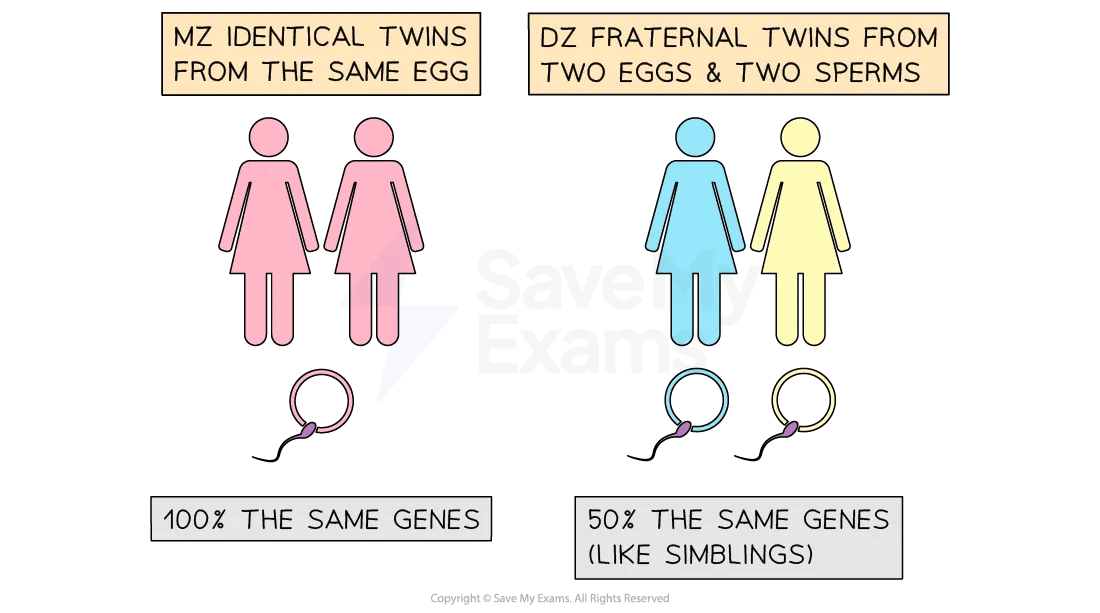Genetic explanations of offending behaviour
- Genetic explanations of offending behaviour revolve around the idea that criminality is inherited and that there may be specific genes which predispose individuals to criminal behaviour
- A genetic explanation of criminality assumes that mutations within specific genes or combinations of genes may be a key contributory factor in determining criminal behaviour in an individual
- Chromosomal variations within the XYY range have been linked to increased testosterone which in turn have been associated with increased aggression (Price et al. 1966)
- One way of investigating a genetic explanation of offending behaviour is to use twin studies in which concordance rates are measured to look for agreement between MZ (identical) and DZ (non-identical) twins in relation to criminality i.e. if one twin has committed a crime how likely is it that the other twin has also committed a crime?
- The main assumption underpinning twin studies is that if criminality is genetic, then there will be a higher concordance rate between MZ twins than between DZ twins as MZ twins share 100% of their DNA
- Some research has suggested that candidate genes such as the MAOA gene (which has been linked to violent, anti-social behaviour by Brunner, 1993) and the CDH13 gene in their mutated forms may predispose an individual to criminal behaviour (Tiihonen et al, 2014)

MZ twins may provide evidence of a genetic explanation of offending behaviour.
Exam Tip
Make sure that you don’t confuse MZ twins with DZ twins as doing so will mean that you are unlikely to gain full marks in a question on genetics.


